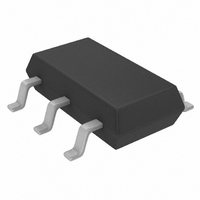LTC1734LES6-4.2#TRM Linear Technology, LTC1734LES6-4.2#TRM Datasheet - Page 7

LTC1734LES6-4.2#TRM
Manufacturer Part Number
LTC1734LES6-4.2#TRM
Description
IC CHARGER BATT LIN LI-ION SOT23
Manufacturer
Linear Technology
Datasheet
1.LTC1734LES6-4.2TRMPBF.pdf
(12 pages)
Specifications of LTC1734LES6-4.2#TRM
Function
Charge Management
Battery Type
Li-Ion, NiCd, NiMH
Voltage - Supply
4.55 V ~ 8 V
Operating Temperature
-40°C ~ 85°C
Mounting Type
Surface Mount
Package / Case
SOT-23-6 Thin, TSOT-23-6
Lead Free Status / RoHS Status
Contains lead / RoHS non-compliant
Other names
LTC1734LES6-4.2#TRMTR
Available stocks
Company
Part Number
Manufacturer
Quantity
Price
APPLICATIONS
Manual Shutdown
Floating the program resistor allows an internal 3 A
current source (I
2.15V shutdown threshold (V
the charger. In this mode, the LTC1734L continues to
draw quiescent current from the supply (I
a negligible leakage current is delivered to the battery
(I
Shutdown can also be accomplished by pulling the other-
wise grounded end of the program resistor to a voltage
greater than 2.25V (V
1.5V, but the internal battery voltage resistor divider will
draw about 34 A from the battery until shutdown is
entered. Figure 1 illustrates a microcontroller configura-
tion that can either float the resistor or force it to a voltage.
The voltage should be no more than 8V when high and
have an impedance to ground of less than 10% of the
program resistor value when low to prevent excessive
charge current errors. To reduce errors the program
resistor value may be adjusted to account for the imped-
ance to ground. The programming resistor will prevent
potentially damaging currents if the PROG pin is forced
above V
down by other circuitry or be shorted to ground. If V
not shorted to ground, the current through the resistor will
pull V
Another method is to directly switch the PROG pin to a
voltage source when shutdown is desired (Caution: pull-
ing the PROG below 1.5V with V
excessive and uncontrolled charge currents). The volt-
age source must be capable of sourcing the resulting
current through the program resistor. This has the ad-
vantage of not adding any error to the program resistor
during normal operation. The voltage on the PROG pin
BMS
).
CC
CC
up slightly.
Figure 1. Interfacing with a Microcontroller
. Under this condition V
POLE OUTPUT
OPEN DRAIN
OR TOTEM
ADC INPUT
PROGPU
C
U
MSDT
) to pull the PROG pin above the
INFORMATION
R
Max). Charging will cease above
PROG
U
MSDT
CC
PROG
CC
), thus shutting down
W
LTC1734L
may float, be loaded
applied will cause
1734 F01
SHDN
), but only
U
CC
is
must be greater than 2.25V (V
entering shutdown, but no more than 0.3V above V
prevent damaging the LTC1734L from excessive PROG
pin current. An exception is if V
no other circuitry loading V
current will be low, it is allowable to have the PROG pin
shutdown voltage applied. A three-state logic driver with
sufficient pull-up current can be used to perform this
function by enabling the high impedance state to charge
or enabling the pull-up device to enter shutdown.
An NPN transistor or a diode can also be utilized to
implement shutdown from a voltage source. These have
the advantage of blocking current when the voltage source
goes low, thus automatically disconnecting the voltage
source for normal charging operation. Using an NPN
allows the use of a weak voltage source due to the current
gain of the transistor. For an NPN, connect the collector to
V
PROG pin. For a diode, connect the anode to the voltage
source and cathode to the PROG pin. An input high level
ranging from 3.3V to V
shutdown while a low level of 0.5V or less should allow for
normal charging operation. Use of inexpensive small
signal devices such as the 2N3904 or 1N914 is recom-
mended to prevent excessive capacitive loading on the
PROG pin (see Stability section).
Sleep Mode
When the input supply is disconnected, the IC enters the
sleep mode. In this mode, the battery drain current (I
is a negligible leakage current, allowing the battery to re-
main connected to the charger for an extended period of
time without discharging the battery. The leakage current
is due to the reverse-biased B-E junction of the external
PNP transistor.
Undervoltage Lockout
Undervoltage lockout (UVLO) keeps the charger off until
the input voltage exceeds a predetermined threshold level
(V
hysteresis is built in to prevent oscillation around the
threshold level. In undervoltage lockout, battery drain
current is very low (< 1 A).
CC,
UVLOI
the base to the voltage source and the emitter to the
) that is typically 4.56V. Approximately 150mV of
CC
should be adequate to enter
CC
down. Then, because the
CC
MSDT(MAX)
is allowed to float with
LTC1734L
) to ensure
CC
BSL
7
1734lf
to
)














